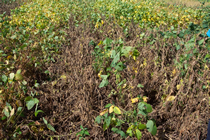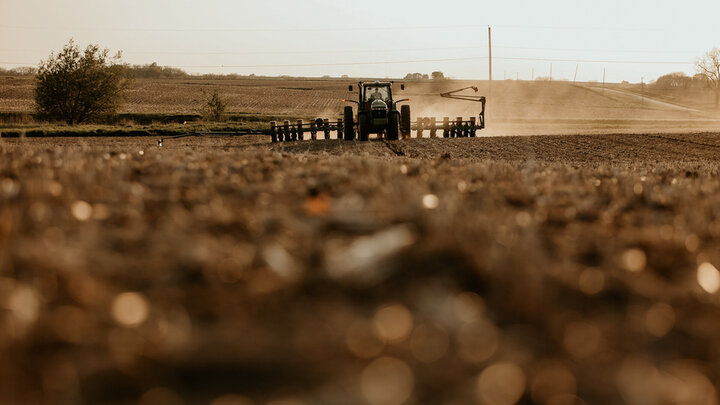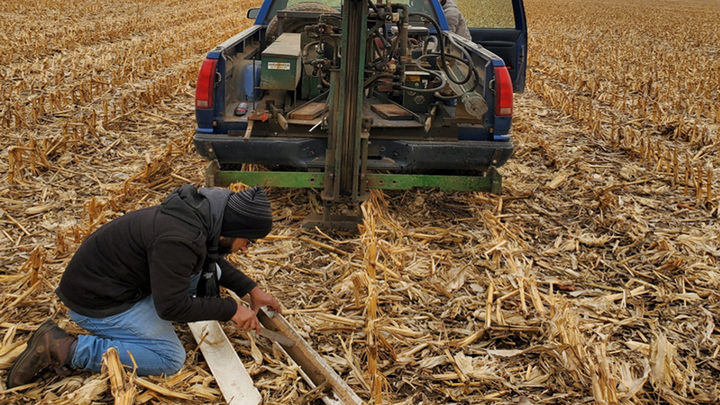By Loren J. Giesler, Former Extension Plant Pathologist
Pathogen
Stem canker is divided into two diseases (Northern and Southern Stem Canker). In Nebraska we have only observed northern stem canker caused by the fungus Diaporthe phaseolorum var. caulivora. The fungus normally survives the winter in infested crop debris and has been shown to be associated with seed. It is thought that infested crop debris is the primary inoculum source for disease development. Spores are produced and infections occur during the early vegetative stages of the crop. Infections remain latent until the soybean plant is in the reproductive stages.
Disease Symptoms
Stem canker is first noticed during the latter half of the growing season. Reddish-brown stem lesions develop during the early reproductive stages of plants. Lesions will usually be in the vicinity of a stem node. A diagnostic symptom of stem canker is that green stem tissue will usually be present both above and below individual stem cankers. As the disease progresses, cankers will enlarge, longitudinally, turn dark brown to black in color, become slightly sunken and eventually completely girdle stems. At this point, the free flow of nutrients and water is disrupted in the plant. Cankers, which coalesce, may be confused with stem discoloration caused by Phytophthora. However, stem canker usually forms higher on the plant than does Phytophthora. Severe stem canker can result in premature, and often sudden, plant death. Foliage of diseased plants initially exhibits interveinal yellowing. This is followed by tissue death between the veins. Eventually, leaves die and usually remain attached to leaf stems (petioles).




Favorable Environmental Conditions
The severity of stem canker is highly dependent on the weather conditions during early crop development. Rainy, wet weather favors disease development. Fields which have hail damage have been observed to have more stem canker.
Management
Genetic Resistance
Soybean varieties vary in their susceptibility to stem canker and resistance has been identified to this disease. Select resistant varieties for fields with a history of high stem canker incidence.
Cultural Practices
Use crop rotation to reduce inoculum in fields. Incorporation of residue will reduce inoculum and disease potential. Minimize plant stress with good agronomic practices.
Chemical/Biological Control
Fungicide applications during reproductive growth stages have been shown to reduce disease severity, but results vary greatly.
NebGuide
Foliar Fungicide Use In Soybean (UNL NebGuide G1862)
Additional Resources
- North Central Soybean Research and Education Initiative: Stem Canker
Soybean Diseases
- Soybean Diseases (Home)
- Anthracnose
- Bacterial Blight
- Bacterial Pustule
- Bean Pod Mottle Virus
- Brown Spot
- Brown Stem Rot
- Charcoal Rot
- Frogeye Leaf Spot
- Phytophthora Root and Stem Rot
- Pod and Stem Blight
- Purple Seed Stain
- Rhizoctonia Root Rot
- Sclerotinia Stem Rot
- Soybean Cyst Nematode (SCN)
- Soybean Mosaic Virus
- Soybean Rust
- Stem Canker
- Sudden Death Syndrome (SDS)








